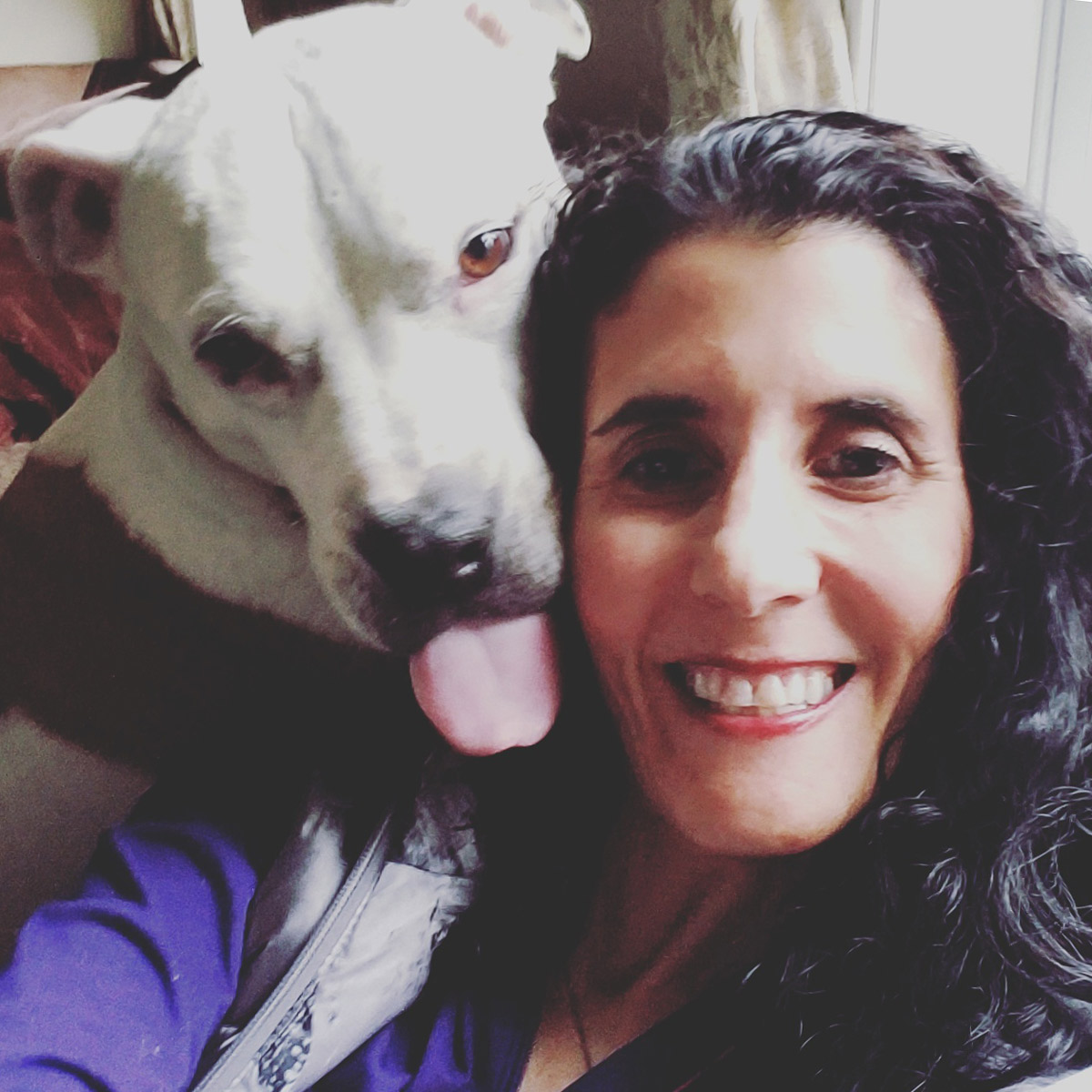
6 Signs of Dental Disease in Dogs and What You Can Do About It
Key takeaways:
Chipped or broken teeth, loose teeth, and bad breath can all be signs of dental disease in dogs.
If your dog drops food from their mouth, this can signal pain due to dental problems or other oral health issues.
If allowed to progress, the bacteria from canine dental disease can affect your dog’s other organs, leading to a decline in health. Treatment from a veterinarian can help.

Dogs need dental care just as humans do. This includes cleanings, X-rays, and surgical procedures. Like human teeth, if you ignore them, they will eventually develop problems. But if left untreated until its late stages, dental disease affects more than your dog’s mouth. Advanced dental disease can lead to kidney, liver, and heart disease in dogs.
Canine teeth can develop dental disease before dogs are fully grown. Nearly 85% of dogs over 3 years old have periodontal disease. So what can you do?
The best way to protect your dog’s dental health is to have your veterinarian examine your dog’s teeth and gums at their annual wellness exam. You can also check your pup’s teeth and mouth regularly for signs of dental disease.
Search and compare options
What are the symptoms of dog dental disease?
To catch canine dental disease early, check your dog regularly for the following symptoms.
1. Chipped or broken teeth
A chipped or fractured tooth may appear as a brownish or black spot on the tooth’s surface. This can be an exposed nerve. Like humans, when the tooth nerve is exposed, your dog can have pain, infection, and tooth abscess.
2. Bad breath
If you think smelly breath is the norm for your dog, think again. Like foul-smelling human breath, bad breath in dogs is a sign of bacteria buildup in the mouth. Bad breath is generally the first sign of problems with your pup’s oral health.
3. Loose teeth
Teeth that are loose can indicate loss of bone below the gumline. The health of the bone holding the teeth in place will show up only in an X-ray. It is vital that your dog has a complete oral health exam and cleaning annually to get an accurate picture of their oral health.
4. Bleeding from the mouth
Bleeding from your dog’s mouth could be due to infection or abscess. Even if you cannot find the source of the bleeding, your vet should check it out so it doesn’t progress.
5. Drooling or dropping food from the mouth
Unusual chewing, drooling, or dropping food may signal that your dog is in pain due to oral health problems. Be cautious when investigating your pet’s mouth if you suspect a problem. Even the friendliest dog could bite when in pain.
Read more like this
Explore these related articles, suggested for readers like you.
6. Oral pain
Dogs are masters at hiding pain, but they may indicate their discomfort in various ways. If your dog is experiencing oral pain, they may do any of the following:
Show less interest in eating
Show less interest in eating hard food or treats
Chew more slowly than usual
Resist having their face touched
Paw at their face and mouth
Display changes in personality
When should you call your vet about symptoms of dental disease?
You should call your vet for an appointment if you notice any of the following symptoms:
Broken or loose teeth
Extra teeth or retained baby teeth
Discolored teeth
Visible yellow crust around the gumline
Abnormal chewing
Reduced appetite or refusal to eat
Pain in or around the mouth
Swelling of the face
Changes in your dog’s personality and temperament
Aggression or head shyness, particularly when you try to look in their mouth
The key to successful treatment of dental disease is catching it early. The sooner you bring your furry friend to the vet, the sooner you can begin treating the problem and the less likely it is to cause more damage.
What causes dental disease in dogs?
Poor dental hygiene often contributes to canine dental disease. Without proper cleaning, food and bacteria accumulate at the gumline. This accumulation of bacteria is called plaque.
The plaque combines with salts in the saliva and hardens into tartar, a rough substance that irritates the gums and causes bacteria to build up below the gumline.
Your dog’s gums react by becoming inflamed. As dental disease progresses, the bacteria cause pain, possible tooth loss, infections, and destruction of the tissue supporting the teeth.
Other factors contributing to your dog developing dental disease are breed, genetics, age, and diet.
How can you prevent dental disease in dogs?
The best way to prevent dental disease is to control the buildup of plaque and tartar in your pup’s mouth. Additionally, treat all dental issues in dogs early. The sooner you address any concerns, the less likely they will worsen and spread. Maintaining your pup’s dental health is a two-pronged approach.
It involves the following:
Home treatment
The daily maintenance of your dog’s oral health at home is your responsibility. Your vet may recommend brushing your dog’s teeth daily with a special toothpaste made for dogs. Never use human toothpaste, which contains ingredients that can be toxic to dogs.
If you cannot brush daily, your veterinarian can recommend an alternative, such as a veterinary oral rinse or dental chews designed to remove plaque and tartar. Ask your vet about specially formulated foods to reduce plaque and tartar buildup.
As your dog ages, consider switching to a food formulated for older dogs. Dogs’ nutritional needs change when they get older, and they may have less difficulty chewing and digesting food designed for their age.
Veterinary dental treatment
During your dog’s annual wellness visits, your vet will do an oral evaluation and treatment. Your veterinarian can determine if your dog’s teeth need a professional cleaning or other care.
Professional cleaning and evaluation are routinely done under general anesthesia. Your vet will remove the visible plaque and tartar on your dog’s teeth. They may also take X-rays to evaluate the health of the bones and roots below the gumline. Once the vet has evaluated your dog’s oral health, they will work with you to create a treatment plan.
How do you treat dog dental disease?
Treatment for dog dental disease varies depending on how advanced the disease is. Canine dental disease is classified into four stages. Below, we cover the treatment your dog may need at each stage.
Stage 1
There is inflammation of the gums at the top of your dog’s teeth (gingivitis). The dog’s mouth is still healthy, and there is no bone or gum tissue loss. Treatment consists of brushing your dog’s teeth daily at home and going for annual veterinary teeth cleanings.
Stage 2
Dogs show signs of early dental disease. The gums may or may not appear swollen. But X-rays can show up to 25% bone loss below the gumline.
A dog with stage 2 dental disease needs professional teeth cleaning under anesthesia, preferably by a vet trained in veterinary dentistry. Your vet may also apply or prescribe your dog medication to prevent infection and further bone loss.
Stage 3
Your dog’s gums may be red and bleeding, causing pain that affects their eating and other behaviors. X-rays may show 25% to 50% bone loss.
Dental surgery may be necessary. Your dog’s treatment will be most effective if you’re able to follow up with dental care for your dog at home. This may include brushing your dog’s teeth each day.
Stage 4
Stage 4 is advanced dental disease. Infection and inflammation may have damaged more than 50% of the gum and bone surrounding your dog’s teeth. Teeth may be missing, and many remaining teeth may be loose. It’s important to get your dog professional dental care and treatment.
Your dog will likely need surgery to clean and remove infected teeth. Your veterinarian may prescribe antibiotics to help manage the infection in your dog’s teeth and gums. Treatment for advanced dental disease can also involve a root canal or another dental surgery paired with consistent home dental care.
The bottom line
Taking good care of your dog’s oral health will go a long way toward maintaining their overall health and keeping them pain free. Make a practice of routinely checking your furry friend’s mouth for chipped or broken teeth, redness, inflammation, and bad breath.
Starting early with good dental maintenance will save you and your pup time and money later on painful procedures. Canine dental disease is treatable. Keep up with your dog’s annual exam so your veterinarian can get a good look at their teeth and gum health.
Why trust our experts?



References
American Veterinary Dental College. (n.d.). Stages of pet periodontal disease.
American Veterinary Medical Association. (n.d.). Pet dental care.
American Veterinary Medical Association. (2020). Pet dental care.
Animal and Plant Health Inspection Service. (2024). Canine periodontal disease (PD). U.S. Department of Agriculture.
Bellows, J. (2016). Dental care and what to expect. Veterinary Partner.
Bellows, J., et al. (2019). 2019 AAHA Dental Care Guidelines for Dogs and Cats. Journal of the American Animal Hospital Association.
Cornell University College of Veterinary Medicine. (n.d.). Periodontal disease.
Cunha, E., et al. (2022). Revisiting periodontal disease in dogs: How to manage this new old problem? Antibiotics.
Marshall, M. D., et al. (2014). A longitudinal assessment of periodontal disease in 52 miniature schnauzers. BMC Veterinary Research.
Reiter, A. M. (2018). Dental disorders of dogs. Merck Veterinary Manual.
Weir, M., et al. (n.d.). Dental disease and its relation to systemic disease in pets. VCA Animal Hospitals.
Weir, M., et al. (n.d.). Dental pain in dogs. VCA Animal Hospitals.
Wisconsin Department of Agriculture, Trade and Consumer Protection. (n.d.). Grading canine dental condition.





























